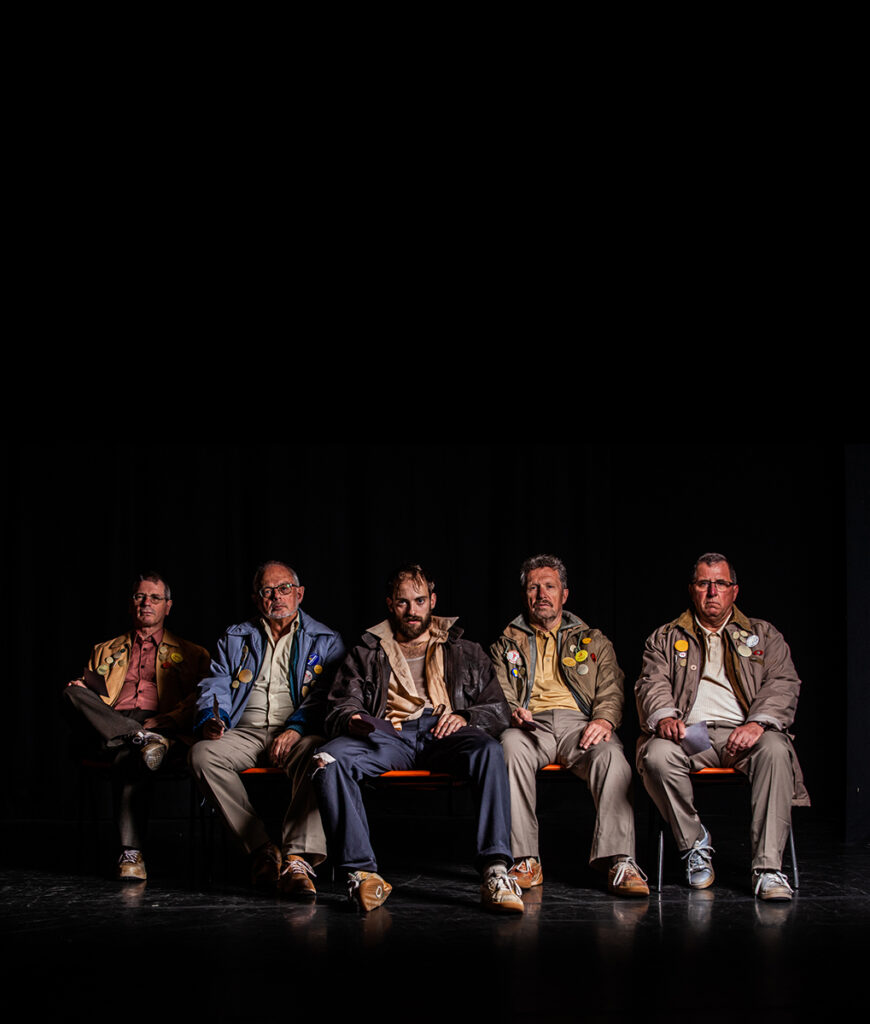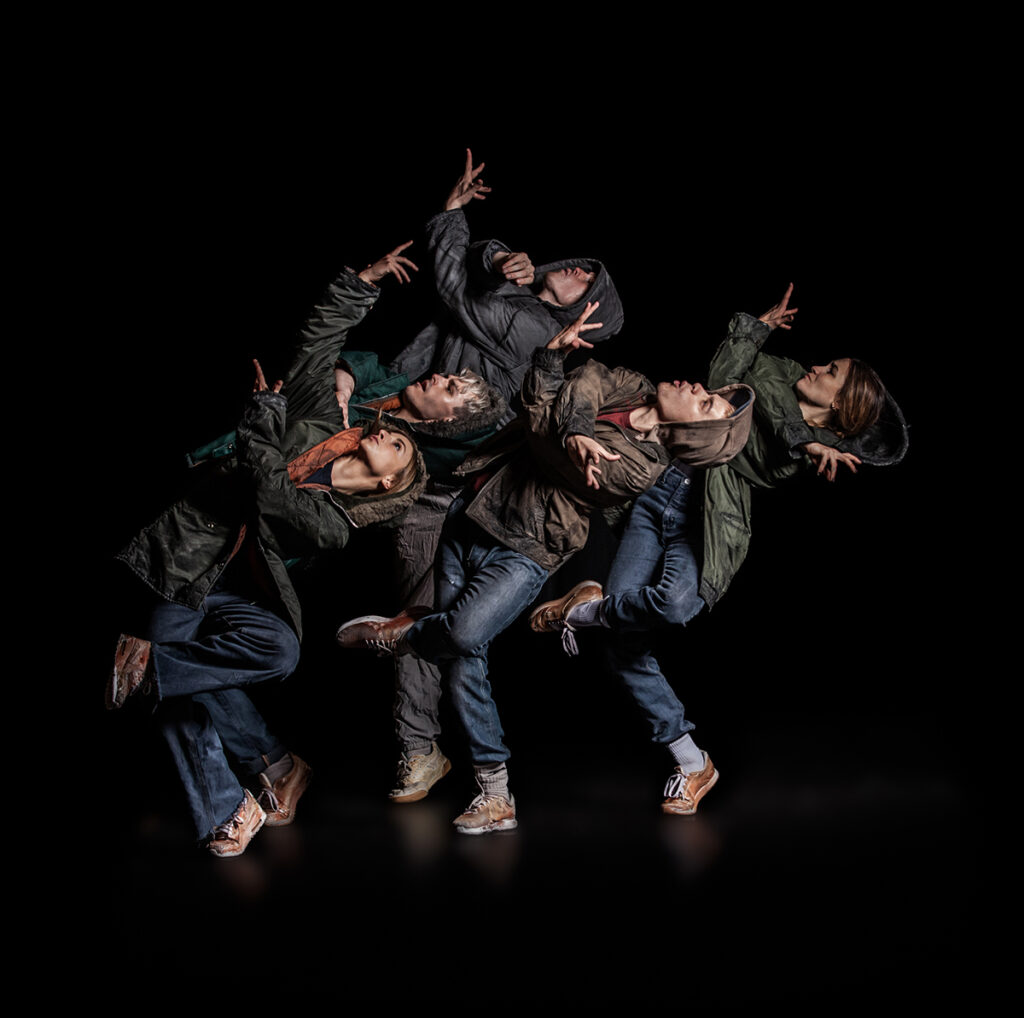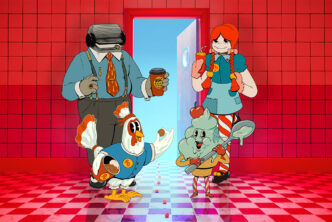I often find it difficult to take dramas about miners seriously; mostly because of the famed Monty Python parody featuring the son who comes home from Barnsley to visit his London family: an inspired juxtaposition, given the former is now a coal miner, whilst his resentful father is a famous playwright. ‘Coal mining is a wonderful thing father, but its something you’ll never understand!’
Perhaps that’s true of many of us not born into a coal mining culture. The damage done to communities by the 1980’s Conservative government and their desire to emasculate the NUM – closing down pits which were no longer profitable – can’t be underestimated. Margaret Thatcher shut 115 during her tenure as prime minister. For many miners and their families, the wounds have never really healed.

Director and choreographer, Gary Clarke examined the cultural devastation of the miners’ strike in his previous show Coal. Is there anything else to say? Sequel Wasteland explores a time when despair turned to euphoria, as the ravaged landscape of post industrial Britain was transformed by the illegal rave culture of the 1990’s. For a brief period, it seemed as though music and dance might save the day.
With virtually no dialogue, Wasteland is a remarkably cogent piece of work, telling this story through a dazzling mix of movement and music. Parsifal James Hurst plays the last miner; we know he’s broken because, when he’s not wildly pin balling around the stage clutching a bottle of beer, he’s slumped in a tatty armchair. The sounds of dripping water in an old mine help underscore his emptiness and lack of purpose.
The action then segues to the early 90’s, as disaffected teens and twenty something’s commandeer abandoned industrial spaces to host illegal dance parties. This heralded the start of a new civil war; there’s a clear symmetry between the picket battles which occurred between the Police and striking miners, and the confrontations between Police and ravers (the 1994 Criminal Justice Act was introduced to curb these sorts of illegal shenanigans).

In his programme notes, Clarke writes: ‘For our generation, the future was very bleak with very little prospect. The rave culture gave many of us the opportunity to escape these grim and grey realities, and into a new world of music and dance where we could express our inner feelings, desires and frustrations. My passion for dance grew from this discovery … it is not my intention to romanticise the illegal rave movement, of course it had its complexities, but it is my intention to understand it, its motivation and to try to capture a pivotal moment in the social history of this country.’
The mid section of the show is basically a twenty minute rave, featuring music by Test Department, Steven Roberts and the KLF (Jimmy Cauty, of the KLF, designed the smiley face riot shields featured in the show). Dancers Robert Anderson, Emily Thompson Smith, Patricia Langa, Jake Evans, and Shelley Eva Haden, display jaw dropping levels of physical control, occasionally teetering on the edge of self destruction. These scenes are simultaneously exhilarating and dangerous to watch.

Rare archive footage brings the era to life, capturing the tragedy of mining’s last days, and the emergence of rave’s roots. Unfortunately, choosing to project these images on heavy black stage curtains is a rare misstep, the brightness and contrast becoming grainy and murky.
What’s most surprising about Wasteland is its emotional charge. It begins and ends with a group of Pit Men singing traditional miner’s songs. The Last Miner has no idea how to save himself, or the son who is drifting into drug addiction. The final dance, as the pair attempt to support one another, is powerful enough to break open a stone-clad heart.

Watching Wasteland in 2023, one’s perception can’t help be coloured by what is happening in this country now, with a spiralling cost of living crisis, and a corrupt, right wing government looking to quash any form of dissent or protest. It’s one of the world’s oldest stories: youth will always rebel against the staid, middle aged, power hungry establishment. In the early 70’s, Northern Soul music and Wigan Casino offered a place to escape from working class drudgery; rage against lack of opportunity fuelled the punk movement. With Wasteland, it’s impossible not to take the side of the ravers. They make a lot of good points.
Maybe it needs to happen again.
Wasteland is at Contact, Manchester from 1-3 February 2023.





